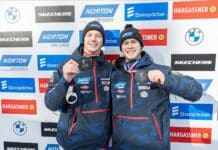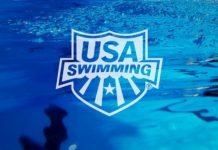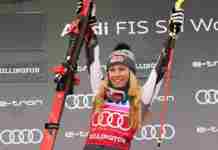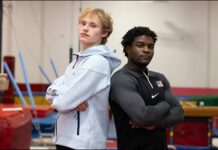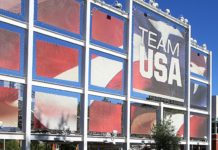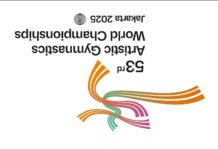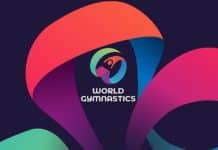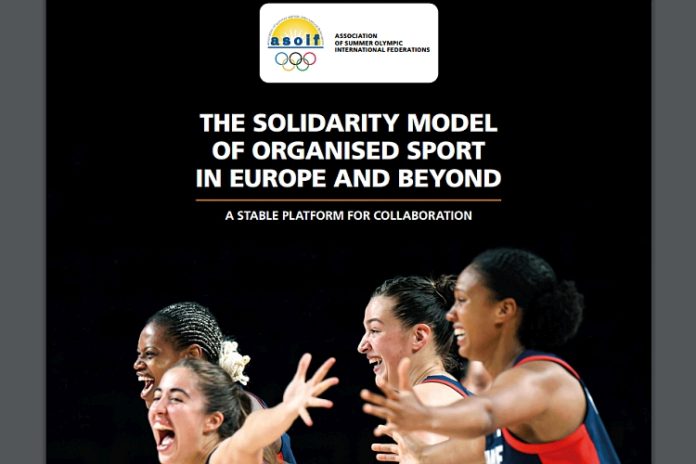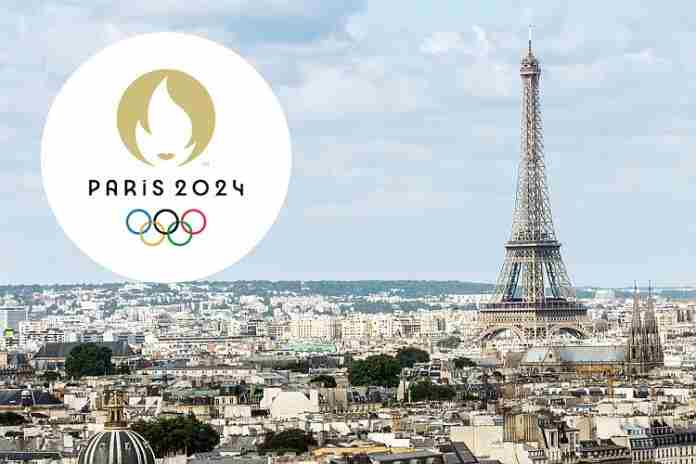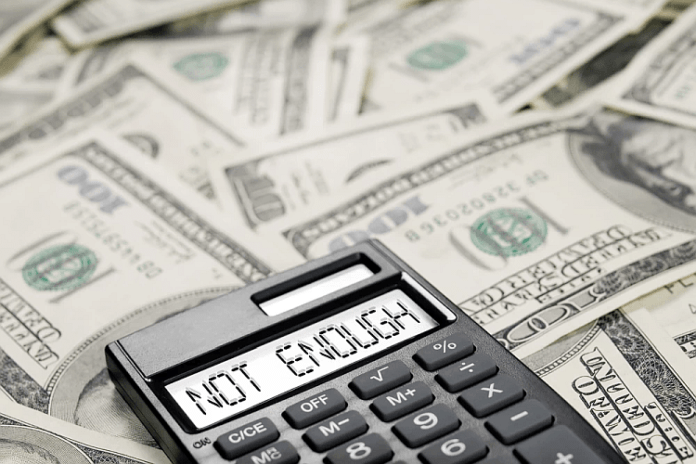(★ THANK YOU to our 48 donors, who have covered 82% of our site costs for the first six months of 2022. If you can help, please donate here. ★)
● Plus: Winter Games 2030: Catalan referenda set for 24 July = IOC: Miro retires = On Screen: Big audiences for NCAA basketball, 537,000 for Tyr Pro Swim = Boxing: Cuba to allow pro boxing after 60 years = Football: CONCACAF Nations draw for 2022-23 = Weightlifting: Six new doping cases in Kazakhstan = Memorabilia: Melbourne ‘56 official’s pin sells for €3,000!?! ●
It’s always nice to know what other people think of you, even if what they think of you isn’t nice, or accurate.
In a new, 40-page report titled The Solidarity Model of Organised Sport in Europe and Beyond, the Swiss-based Association of Summer Olympic International Federations (ASOIF) explains at some length why national governments should commit “to protecting the solidarity model of organised sport in Europe and beyond.”
In particular, the report is hardly enamored with the spreading contagion of American-style professional sports leagues. The core passage is long, but worth reading slowly:
“While largely respecting the international sport pyramid, features of the ‘American Model of Sport’ are increasingly emerging across European sport and exerting an influence from a commercial point of view. This model is essentially an outcome of commodity production of sport where commercial values predominate. Sport is sold as an entertainment product, especially to broadcasters, which constitute the primary consumer with massive bargaining power. It is organised in a way to accommodate TV and franchises relocate to capture new and larger fan bases and viewers. Elite athletes are promoted as celebrities. These features have inspired especially some of the bigger IFs to professionalise their operations, in particular their revenue generation.
“Generally, this is a positive development. However, it must be noted that in the American Model, closed championships and multiple sport federations are standard. Sport is regarded and treated the same as any other business venture. While [International Federations, National Federations and National Olympic Committees] located in [North] America generally have integrated into the pyramidal structure of international sport, the American model is still predominant nationally.
“One example of how the American model has impacted international sport is with the National Hockey League (NHL) in North America. The NHL decided not to interrupt its season, and therefore its players were not able to participate in the men’s ice hockey competitions and represent their countries at the Olympic Winter Games PyeongChang 2018 and Beijing 2022, even though it had done so for the previous five editions.”
For ASOIF, formed in 1983, it’s all about the “European Model.” This makes sense, since of the 28 International Federations which are part of the permanent program of the Olympic Games – as of Tokyo 2020 – 26 are headquartered in Europe and two in Asia.
And the report makes no secret of its goal, as its recommendations are “first and foremost addressed to the [European Union] institutions and EU Member States. However, in time, as the benefits of a certain and stable structure for the evolution of sport become apparent, these principles should be recognised and applied worldwide.”
So, what is the “European Model”?
“The solidarity model of organised sport referred to in this paper reflects both the international pyramidal system of sport and the European Model of Sport.
“The advantages of this pyramidal structure are that:
“● it reinforces financial solidarity mechanisms from elite or professional sport at the top to grassroots sport at the base;
“● it ensures open access to sport for everyone at grassroots level; and
“● it provides the possibility for athletes to move up from the base of the pyramid to professional levels and vice versa (open system of promotion and relegation).
“It should be noted that physical activity is also organised independently from this structure at grassroots level – either informally or commercially. …
“Thanks to its pyramidal system, any profit made through events and activities at elite level are reinvested at the lower levels into sport development. Any profit made is treated as incidental, not central, which is an important difference to commercial sport event organisers.”
This is an outright slap at the top level of professional sports in the U.S., that displays a clear lack of understanding of the way organized sports have developed in the United States.
First and foremost, the ASOIF paper makes the case for continued and expanded national governmental funding of national federations in each country, to support sport from the top down to the bottom.
The U.S. has no such federal funding program – the only country in the world without it – and yet the U.S. is the world’s leading power in the Olympic Games and has the highest-level leagues in the world in men’s basketball (NBA), ice hockey (NHL), baseball (MLB) and American Football (NFL), with soccer (MLS) on the rise as well and expanding leagues in women’s basketball (WNBA) and soccer (NWSL). Most of the major championships in golf are held in the U.S. and one of the four tennis Grand Slams (the U.S. Open).
It’s essentially only those sports which follow the “American model” the report complains of. And in most of these sports, they happen to be the best leagues in their sports in the world. But you wouldn’t that from the report.
Moreover, contrary to the report’s superficial characterization, the U.S. has deeply-ingrained development programs funded both privately and by governments at the local and regional levels. Private organizations at work with youth and sport for decades include Little League and other levels of baseball, Pop Warner football, AAU basketball, AYSO for soccer, YMCAs and so on: some are affiliated with national federations and professional teams, some not. But government support of sport runs deep through the uniquely-American system of sports-in-schools beginning in the middle school and continuing through the immense high school and collegiate programs.
As of 2020, statistics showed that some 7.94 million boys and girls competed in sports in U.S. high school programs and more than 499,000 competed at the collegiate level. For the most part, their participation was supported – in whole or in part – by local or state governmental entities, and is the finest sports development system in the world. The NCAA estimated that about 75% of the American team at Tokyo 2020 competed at a U.S. college, and hundreds (if not several thousand) foreign athletes receive scholarships to study and train at American universities.
Even more insulting is the sniffling irritation at the enormous commercial success of the U.S. leagues in baseball, basketball and ice hockey (American Football is not widely played – or understood – internationally), as noted by the NHL’s decision not to participate in the 2018 or 2022 Olympic Winter Games.
But if sports are all about the athletes – and that’s hardly mentioned in the ASOIF paper – then what about the fact that most athletes aren’t paid to compete in the Olympic Games. In the NHL, the minimum salary this season is $750,000, and $925,258 in the NBA. It’s in the $700,000 range now for Major League Baseball and the NFL, but much less for the less-well-heeled MLS, WNBA and NWSL. The European model says athletes should compete for national teams to the detriment of their clubs, and if a government is paying them, this makes sense.
But in the Olympic world – at least for basketball, football and ice hockey – the U.S. government pays them nothing.
Moreover, the European model – for which the ASOIF paper asks for more support, while demanding no governmental involvement within national sport organizations – has widely failed to support the Olympic-program International Federations. The report notes:
“Currently, in terms of the Summer Olympic Games, around half of the IFs may be said to have significant reliance on IOC revenues, that is more than 25% of their revenues coming from their Olympic Games revenue share in any four-year cycle, with more than a third of the IFs relying on Olympic Games revenue share for more than 45% of their incomes.”
In other words, if it wasn’t for the enormous financial success of the Olympic Games, primarily powered by American television giant NBCUniversal and American-based Discovery, Inc. (for European rights from 2018-24), multiple International Federations would simply cease to exist.
And so the report states the obvious: “with increasing competition emerging from new sport formats, esports and other entertainment forms, there is a pressing need for [International Federations] to embrace commercialisation.”
Plus the kicker:
“In ASOIF’s view, the commercialisation of sport and upholding sporting values can be compatible if the revenues generated through professional sport are reinvested at the lower
levels for sport development, applying the solidarity model. In fact, IFs can thereby become more professional and develop their sport in a holistic way.”
That is exactly what happens in the U.S., but not in a tidy, top-down, unified, pyramidal scheme. Instead, it’s the usual confused American jumble of public and private interests, in commercial, educational, civic and community-based organizations, all trying to make sport work for kids, parents, sponsors and fans, whether in person, on television or being streamed online. It’s only the most successful sport development system – athletically and commercially – in the world, in the sports that use it.
The ASOIF report speaks little of vision, entrepreneurship, innovation and investment, the driving forces in successful U.S. sport ventures. It talks a lot about the need for more money from government, to be spent without oversight.
European soccer has embraced U.S. concepts and has attracted more and more U.S. ownership, which is learning more about development academies and other structures outside of the American high school and collegiate systems. These, in turn, come back into the U.S. commercial environment and lead to new deals for fans via streaming, and soon, for online promotion through betting and eSports.
It should be noted that the European model is very much alive in America’s Olympic-sport national federations. Those which are not affiliated with professional leagues, are – with some exceptions – dependent on grants from the U.S. Olympic & Paralympic Committee, whose money comes mostly from a share of U.S. television and sponsorship rights. Kind of like those European national federations that get their money from their governments.
And how are they doing? The vast majority of U.S. Olympic-sport federations would desperately like more revenue for their operations and their athletes, but their commercial popularity ranges from tepid to near-zero. So much for the “European model” in America.
Near the end, the ASOIF report makes a plea not only for government financial support, but for protection:
“In Europe, for example, the inconsistency between the judicial bodies and other institutions leaves not-for-profit IFs exposed to an increasing number of legal challenges from wealthy private entities or individuals.
“IFs’ not-for-profit nature, their cultural values and social contribution all over Europe (and globally) are not always acknowledged by the market-based approach pursued by the courts and legislators. These matters must be allowed to evolve and recent reports from the European institutions indicate there is now a willingness to adopt a new sport-specific approach.”
The “values” and “social contributions” championed by ASOIF in the “European model” are fully present in the U.S., but the report isn’t savvy enough to understand or appreciate them, or the value of passion and vision to drive new ventures. And as for the redirection of large amounts of money from those American for-profit leagues into government hands for other uses, may we introduce you to some other American institutions: the Internal Revenue Service and its state counterparts.
Rich Perelman
Editor
≡ THE 5-RING CIRCUS ≡
● XVI Olympic Winter Games: 2030 ● Public voting in nine counties in the Catalan region of Spain will take place on 24 July to determine whether the region wishes to go forward with a bid for the 2030 Winter Games.
The primary vote will be among the six counties which would host events at the Games, with the cumulative vote deciding whether the region would go forward with a bid.
A second vote, on the same day, will be held in each of the three counties that would be “indirectly impacted” by the Games – Ripolles, Solsones and Bergueda – with each county voting “yes” or “no” on being involved. A rejection would result in only that county being removed from the Games plan.
The vote does not apply to the Aragon region, which has said it is not satisfied with the Games plan as currently proposed and intends to submit its own ideas.
● International Olympic Committee ● Only those deeply involved in the Olympic Movement know his name, but Spain’s Pere Miro has been a key member of the IOC’s management team since being invited to Lausanne in 1992 by then-President (and fellow Spaniard) Juan Antonio Samaranch.
Over 30 years, he has been a key advisor to three IOC Presidents and retired today, as Deputy Director General for Relations with the Olympic Movement. He was instrumental in setting up the Olympic Solidarity program and worked to create deeper ties between Lausanne and the 200-plus National Olympic Committees around the world.
He will continue as a Senior Advisor to IOC chief Thomas Bach (GER), but plans to spend more time exploring Switzerland … on foot!
● Russia ● The Court of Arbitration for Sport issued an update on all of the current actions before it from various Russian entities and the status:
● Russian Football Union: Filings were made against FIFA, UEFA and multiple national associations; none of the requests for stays were granted and arbitrators are being lined up in two of the three cases; one appeal was withdrawn.
● Russian Olympic Committee: This filing asked for a stay from the European Olympic Committees ban on Russian athletes at the since-completed Winter European Youth Olympic Festival in Finland. The request for a stay was denied; a full hearing is still to come.
● Russian national federations: Five Russian national federations in figure skating, gymnastics, rowing, rugby and biathlon all filed against their International Federations, trying to annul the bans on Russian participation. None of the six cases have been heard yet; the action against the International Biathlon Union is on hold for now.
The Russian Ministry of Sport stated that as many as 50 actions will be filed against continental and worldwide federations, challenging their bans on Russian participation, so more are coming.
● On Screen ● The sports television blockbusters of last week were, of course, the NCAA Tournament games, for both men and women.
The men’s semifinal between North Carolina and Duke last Saturday drew a combined 17.663 million viewers on TBS, TNT and TruTV, while the earlier Villanova-Kansas match drew 11.701 million combined.
Sunday’s women’s championship between Connecticut and South Carolina drew 4.683 million between ESPN and ESPN2.
The European World Cup qualifying match between North Macedonia and Portugal drew 200,000 viewers last Tuesday at 2:30 p.m. Eastern time, pretty impressive given the day and time. In swimming, the Tyr Pro Swim Series/San Antonio highlights on NBC on Sunday at 12:30 p.m. drew a very good 537,000 viewers.
● Boxing ● Retracting a Fidel Castro-imposed rule from 1962, the Federacion Cubano de Boxeo announced Monday that Cuban fighters will be allowed to box professionally, starting almost immediately.
In a statement provided to BoxingScene.com, FCB president Alberto Puig explained:
“Three and a half years ago a serious analysis began that has resulted in the approved agreement and well seen by the direction of the country’s sport and the Cuban Boxing Federation with Golden Ring Promotions, for the representation of Cuba in its entry into professional boxing.”
Mexico-based Golden Ring Promotions will handle the events for the Cuban fighters, and put on an exhibition card of Cuban stars last June in Aguascalientes. Cuba scored four boxing golds at the Tokyo 2020 Games, from lightweight Andy Cruz, welterweight Roniel Iglesias, light heavyweight Arlen Lopez and heavyweight Julio Cesar La Cruz, all of whom will be sought-after pros.
● Football ● The 2022-23 CONCACAF Nations League draw was completed on Monday night, with the defending champion U.S. men taking on El Salvador and Grenada in Group D, sometime in June.
The U.S. will also play two friendlies in June, continuing its preparation for the FIFA World Cup in Qatar in November.
The CONCACAF Nations League group stage will continue in March 2023 and the finals will be played in June of 2023.
● Weightlifting ● The Weightlifting Federation of Kazakhstan has reported six doping positives from out-of-competition testing from 9 February to 2 March, as reported by InsideTheGames.
Among the dopers is Tokyo Olympic 61 kg bronze medalist Igor Sun, 23, who had previously been suspended for a doping positive in 2015 as a teenager. The other five are teenagers who won medals in youth and junior events, or have not competed internationally at all.
It’s another bad sign for weightlifting, and for Kazakhstan; its Rio 2016 Olympic 77 kg gold medalist, Nijat Rahimov, had an eight-year doping suspension confirmed by the Court of Arbitration for Sport on 22 March.
● Memorabilia ● The Sporlympic VIII auction by Vermont & Associes of Paris concluded on Saturday, with 227 of the 389 lots sold.
Among the highlights was a 1924 Olympic medal in silver that sold for €4,900 (€1 = $1.09), and an official’s pin from the 1956 Melbourne Games, apparently to be worn by a National Olympic Committee Secretary General. Expected to bring €150-200, it sold for €3,000!
Seven Olympic torches sold (all prices do not include the buyer’s fees):
● 1936: Berlin, sold for €3,000
● 1948: London, sold for €5,100
● 1948: London, sold for €5,000
● 1964: Tokyo, sold for €5,600
● 1972: Munich, sold for €2,900
● 1992: Barcelona, sold for €1,600
● 2008: Beijing, sold for €2,800
The featured lot was an ornate “golden bowl” – Le Bol d’or – created for an 1894 cycling race of the same name as a promotion for a new magazine, Paris-Pedale. Created by the noted French sculptor Francois-Raoul Larche in bronze, it weighs 33 pounds and stands 15 inches high. Expected to sell for between €18,000-20,000, it brought €23,000 plus the buyer fees!
The massive Ingrid O’Neil Auction 91, including Harrison Dillard’s 1948 Olympic 100 m gold medal, continues through Saturday.
You can receive our exclusive TSX Report by e-mail by clicking here. You can also refer a friend by clicking here, and can donate here to keep this site going.
For our 832-event International Sports Calendar for 2022 and beyond, by date and by sport, click here!








